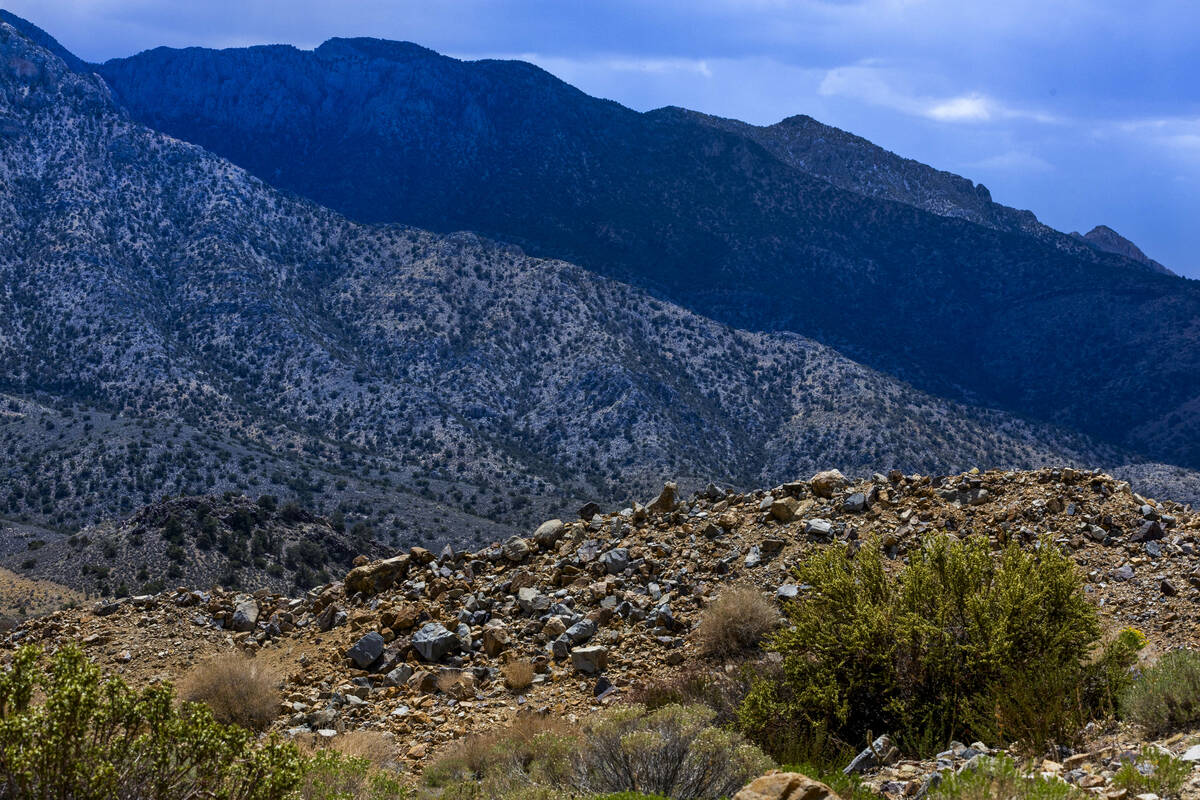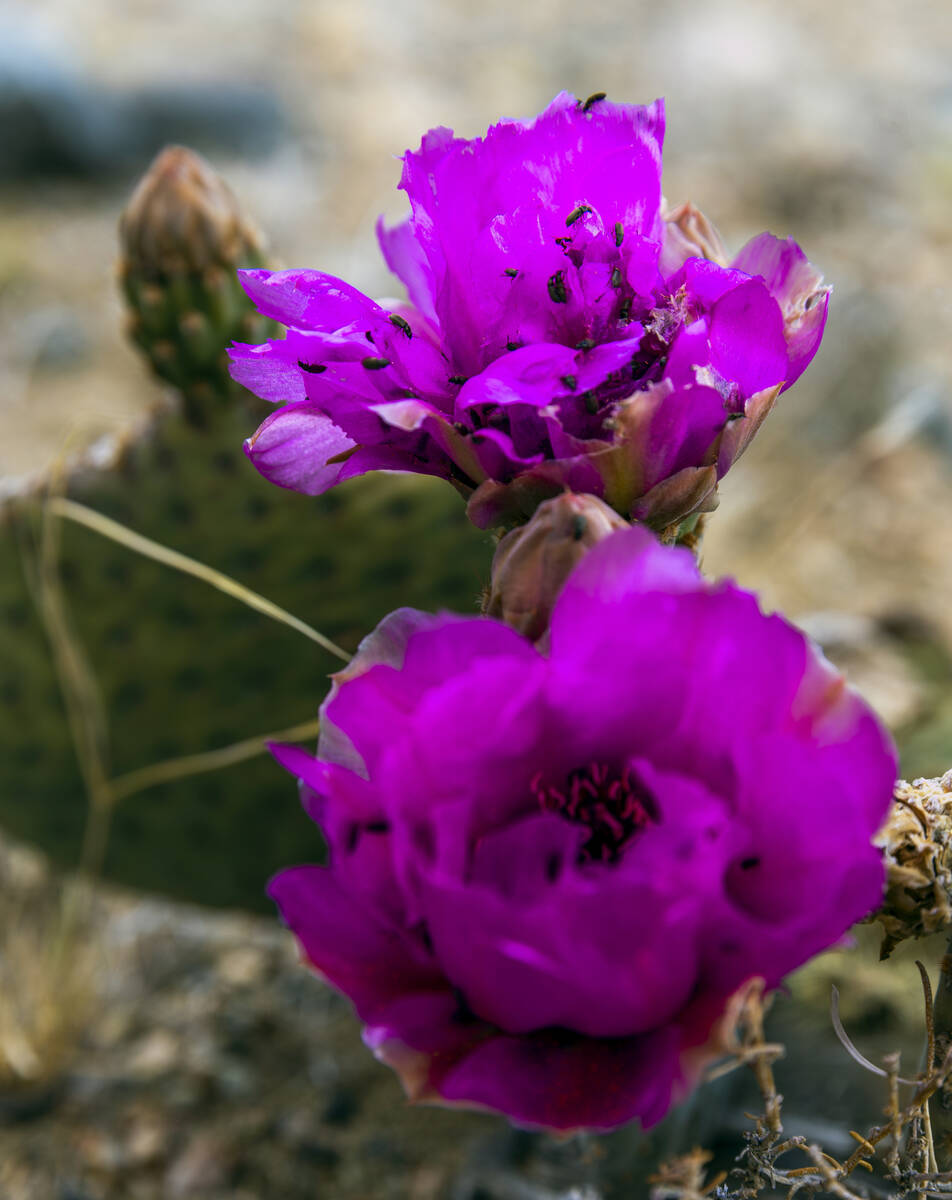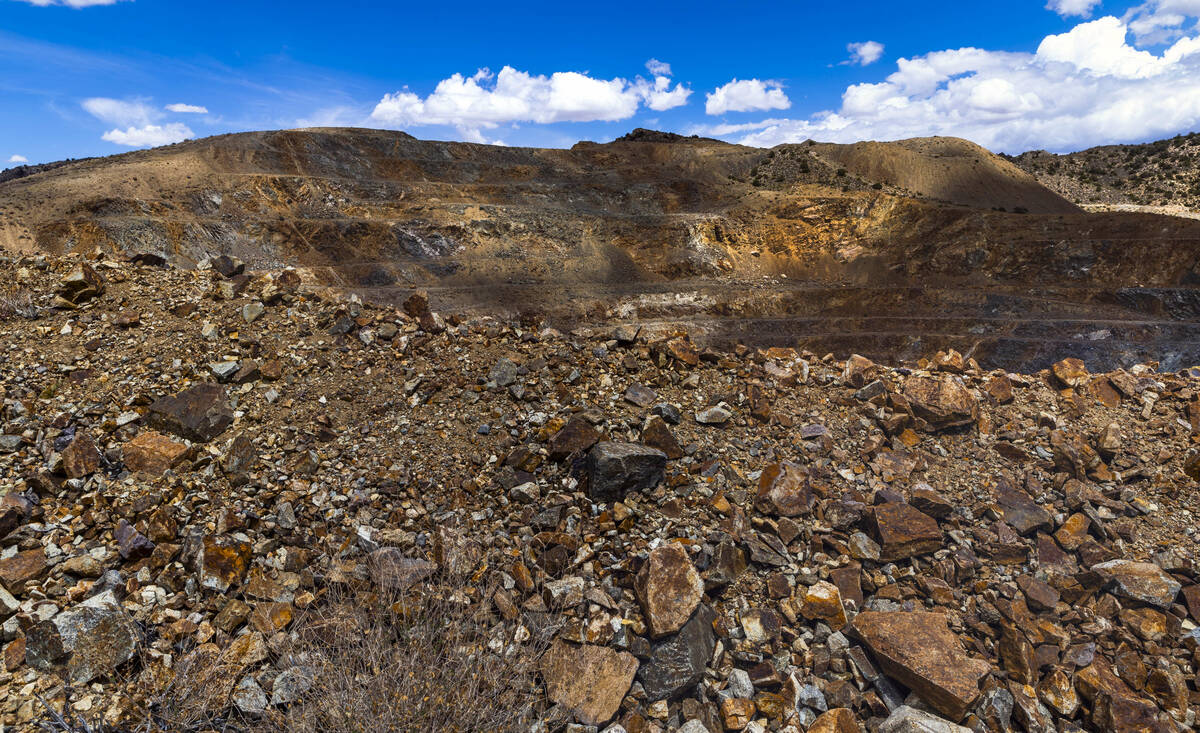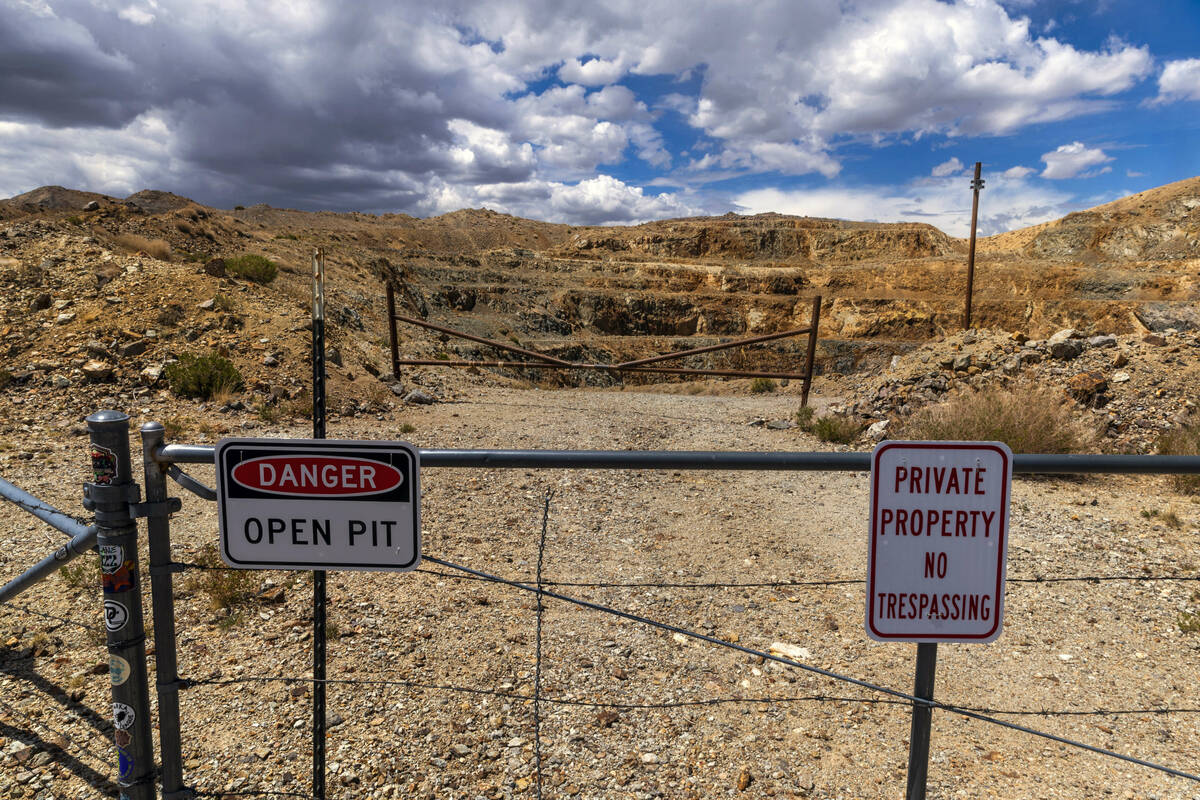Trump awakens long-dead fight to mine on national park land
National Park Service lands have been considered off-limits to new mining efforts for decades — until now.
Citing an emergency order to build the United States’ energy dominance over foreign adversaries, the Trump administration has resuscitated a long-dead fight to mine in what’s now the Mojave National Preserve, about 60 miles southwest of Las Vegas in eastern California.
The scars of extraction are hard to miss at the site of the former Colosseum gold and silver mine, where a fenced-off open pit is flanked by the untouched Clark Mountain due south. Mother Nature’s random ridges on mountains throughout the preserve were replaced over time by structured, manmade dips in the mountain that lead down to the pit.
A century-long, controversial search for wealth within the pit halted fully in 1993 — about a year before the California Desert Protection Act created the preserve in 1994 and the park service began managing it.
Today, officials have their eye on a new set of minerals: 17 rare earth elements, used in everything from smartphones to solar panels to military gear. And for decades, China has cornered the market.
In a press release dated April 8, the Bureau of Land Management endorsed the company’s exploration for rare earth minerals at the site, going as far as to call it “America’s second rare earth elements mine,” even though any full-scale mine on public land would need to go through a federal environmental review with public participation. They did so by authorizing a plan of operations from 1985.
Dateline Resources, the company that assumed ownership of the Colosseum mine site, didn’t respond to multiple requests for comment. In an investor announcement, an executive praised the Trump administration’s decision to greenlight exploration, calling it “a strong foundation for moving the Colosseum Project forward.”
Chance Wilcox, a California desert protection advocate with the National Park Conservation Association, said the effort is “like nothing we’ve ever seen before.”
“You’re talking about the administration promoting speculative mining within a national park, and saying that a BLM plan of operations from 1985 is good to go,” Wilcox said.
Cutting ties with China
Online, public-facing promotions for the Colosseum project are quick to make comparisons to the nearby Mountain Pass Mine — the nation’s only fully functional rare earth mine, located about 6½ miles away.
That mine recently stopped shipping off ore for processing to China as it had done for years due to Trump’s mega-tariffs on the country, onshoring the production of magnets at a facility located in Texas. The Colosseum site’s proximity to Mountain Pass has worked in its favor, even though not much sound evidence of a high-grade rare earth deposit yet exists.
Still, the U.S. remains almost entirely dependent on China for the production of these minerals, which are vital to the technological revolution of the 21st century. In the BLM release announcing that exploration could move forward, this idea was on full display.
“For too long, the United States has depended on foreign adversaries like China for rare earth elements for technologies that are vital to our national security,” the BLM release said. “By recognizing the mine’s continued right to extract and explore rare earth elements, Interior continues to support industries that boost the nation’s economy and protect national security.”
Simon Jowitt, Nevada’s state geologist and director of the Nevada Bureau of Mines and Geology, said putting every stage of the rare earths mining process on American soil is the right goal.
In many ways, Jowitt said, the situation is like coffee. Being able to harvest coffee beans, roast them and put coffee in a cup adds value to the product and stability of its volume.
“If you mine rare earths out the ground, they have a certain value. If you send them to China for processing and putting into end products, then all that value and employment is lost, as well as security of supply,” Jowitt said.
Uncertainty around what’s at stake
The truth is, rare earth minerals are not actually all that rare: the U.S. Geological Survey says they are “relatively abundant” in the earth’s crust. Significant, verified deposits have been discovered in Nebraska, Wyoming, and Montana, while exploration at Colosseum remains in very early stages.
“What we need to do is identify the low-hanging fruit that will actually make it into production and perhaps focus on our efforts around there rather than somewhat speculative developments,” Jowitt said. “This may turn into something interesting; at the moment, we have no idea.”
Chief among the experts who know the Clark Mountain Range better than anyone is Jim Andre, longtime director of the Kelso-based Sweeney Granite Mountains Desert Research Center at the University of California, Riverside.
The remote range happens to be a part of one of the most widely understudied fronts of the Desert Southwest, where only 15 percent of plant species and 30 percent of insect species have been documented, he said.
Andre, a plant ecologist, said about 10 new plant species a year are discovered for the first time in the region.
“The Eastern Mojave is sort of a black hole for inventory,” Andre said. “The rate at which we are discovering new species and describing them is much higher than almost any other place in the United States.”
Legal challenge possible
Andre has hope that California’s wide net for state endangered species protections could help if a mine moves forward. Considering that the restoration phase of the original mine was never finished, he said he would have little faith in plans to rehabilitate the mine site afterward.
“It’s like trying to restore a bulldozed area or tearing down a Walmart and trying to recreate a natural system,” Andre said.
Wilcox, of the national parks advocacy organization, said environmental groups haven’t ruled out a legal challenge to the administration’s decision about Colosseum.
Anyone who cares about national parks should be worried about the dangerous precedent this sets about mining on America’s most treasured public lands, Wilcox said.
“I’m not saying I am 100 percent against this mine being there,” Wilcox said. “Do I believe there should be a mine in the national park? No. But are there rules and regulations that allow it? Yes. And what this mine has not done is gone through the proper rules and regulations to ensure that the park service can fully manage and protect its lands accordingly.”
Contact Alan Halaly at ahalaly@reviewjournal.com. Follow @AlanHalaly on X.























